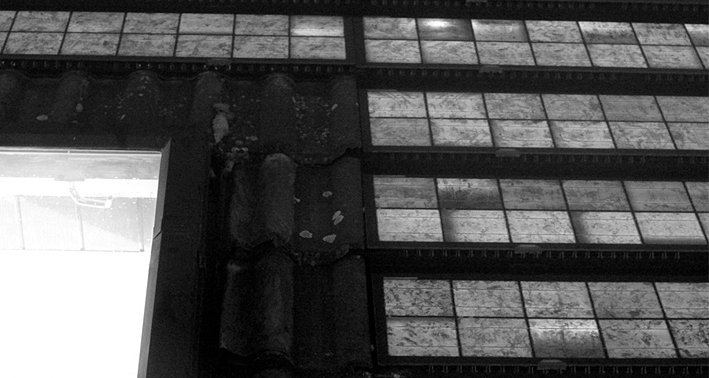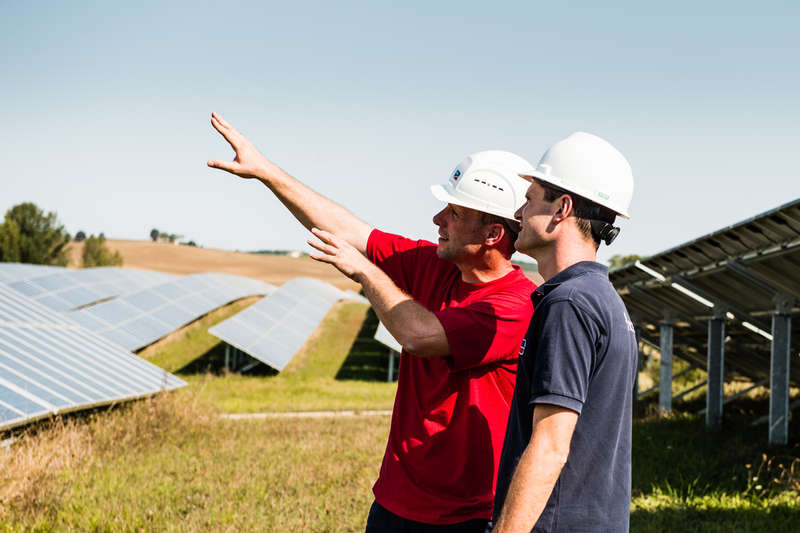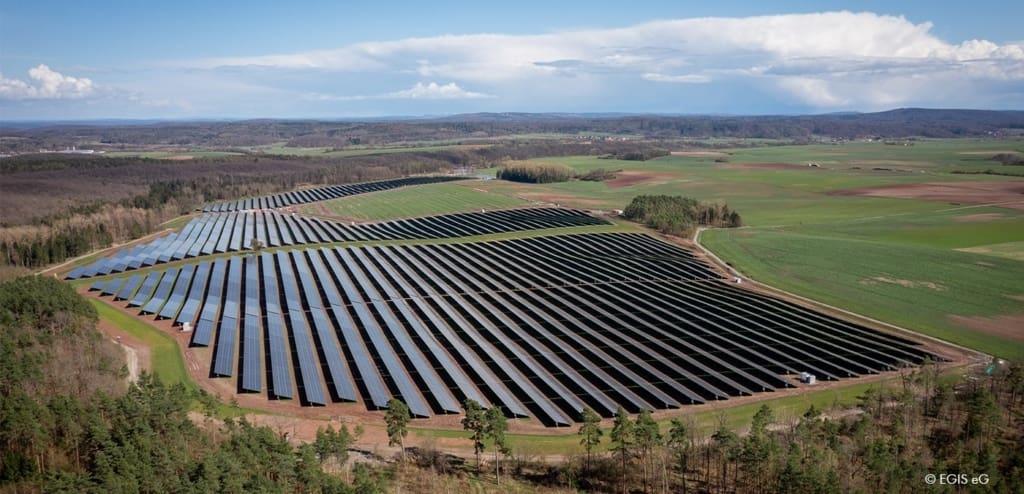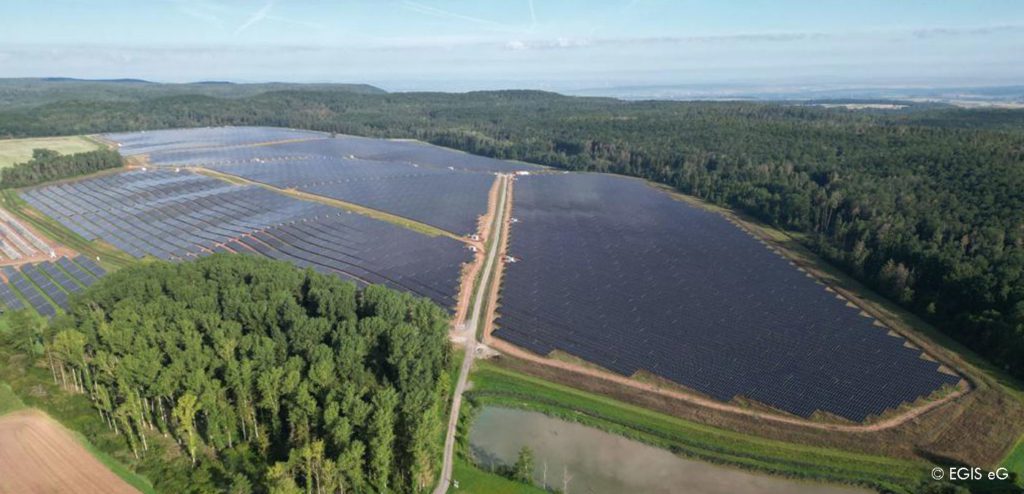On the Cutting Edge: Light-Emitting Panels and Roofs

Guest contribution by Matthias Diehl, from Photovoltaikbüro Rüsselsheim in Germany, about the possibility of using electroluminescence to check solar panels for defects.
Quite a few years ago, I became interested in figuring out what the exact difference was between light-emitting diodes, usually known as LEDs, and normal diodes. As an advocate of solar power, it was only natural that the “normal” diodes I was thinking of were silicon solar cells, and I wanted to find out whether the process of converting visible light to electrical power could somehow be reversed. I was thinking that, just like an electric motor can also be run as a generator, it might be possible to use solar panels as illuminants as well.
In this article, I tell the story of how an originally naïve idea would end up producing a viable way to check PV systems for defects.
Can solar cells emit light?
This was the question I asked a physicist, who explained to me that silicon diodes, and solar cells as a result, are indirect band gap semiconductors. In indirect band gap semiconductors, an electron that passes from the conduction band to the valence band doesn’t do so directly, but instead passes through an intermediate state first. This means that the electron’s energy is not directly converted into a photon, but is instead converted into heat in the silicon’s crystal lattice. Since I don’t really understand much about quantum physics, I simply accepted his answer and resigned myself to the fact that solar cells could evidently not be made to emit light.
A soft glow in the near-infrared region reveals hairline cracks
Imagine my surprise when, three to four years ago, I attended the Photovoltaic Symposium at the Banz Abbey and saw a Photovoltaik-Institut Berlin poster that showed a “light-emitting” PV module! Admittedly, the module did not emit light in the visible spectrum, as had been my original idea, but in the near-infrared spectral region instead. And to be honest, you couldn’t really call it a light. It was more like a soft glow. Nevertheless, powering the PV module made it possible to emit a light that could be seen with a high-sensitivity thermal imaging camera in absolute darkness at a laboratory. The neat thing about the thermograms shown was that you could tell exactly where a solar cell was emitting more light and where it was emitting less light. This made it possible, for instance, to pinpoint solar cell hairline cracks that were so small that it would be impossible for the human eye to see them. In other words, it made it possible to find defects that to date had always remained undetected.
An inspection method that would only work in theory?
It turns out that there was an explanation for why these cells could in fact emit light, or, rather, glow. The transitions from the conduction band to the valence band are described by statistical predictions, i.e., the probability of light being emitted by an indirect band gap semiconductor is extremely low, but it’s still greater than zero. I immediately became fascinated with this new discovery, and soon I came up with my next question: Would it be possible to excite entire PV arrays so that they would emit light with this electroluminescence phenomenon (that’s the technical term for the cells’ glow)? After all, if it could be done, there would be a new way to inspect PV arrays. However, I once again met with disappointment after asking the experts. They explained that it would require a completely dark environment—something that was impossible to achieve outdoors even when it was completely dark. Had I run into a dead end again while attempting to discover a new field inspection method?
Successful imaging with a modified reflex camera
Although my search for information had been discouraging, I decided that I was not going to give up this time even if there were well-founded arguments against trying to light up entire PV arrays. I had to at least give it a try. If it didn’t work, I could simply stop right there. My conviction was further reinforced when I saw that a vendor at the last Photovoltaic Symposium at the Banz Abbey had just started advertising a system for “outdoor electroluminescence” (Berlin-based Great Eyes). That was it. It had to work.
The catch now was to find a more affordable camera that could be used for near-infrared region imaging. The industrial cameras that are usually used for this purpose are normally produced in small amounts and can cost upwards of 20,000 euros. Finally, a group of students led by Prof. Dr.-Ing. Konrad Mertens from the Münster University of Applied Sciences found a solution. Actually, it was more than just a solution. They had come up with the simplest possible solution and gotten great results with it. What had they done? Well, they had simply removed the infrared-blocking filter from a normal digital reflex camera. And to boot, they had also taken incredible electroluminescence pictures of PV modules with it. In fact, the pictures were not that different from those that I had come to expect from professional industrial cameras. The only drawback was a somewhat longer exposure time—a result of the lower sensitivity of the camera’s CCD chip. OK, so maybe it couldn’t quite detect every single detail that a solar panel manufacturer would want to detect, but it was definitely more than good enough to be able to diagnose a wide range of defects. There was one thing though: The students had only tested the camera in a completely dark laboratory. With a little persuasion, I was finally able to convince the young masterminds to modify a camera for me so that I could finally get to run some tests of my own.
Since these first attempts made certain cell defects very easy to detect, we will continue to use this inspection method on additional systems in the future. I’ll keep you up to date through our blog, where I’ll publish the results and the most interesting pictures.
If this inspection method proves to be viable, we will of course be more than happy to offer it to our customers as well.
Find further information on www.photovoltaikbuero.de
The post was published first on pvKnowHowBlog. Many thanks to Matthias for getting the permission to release his article on our blog.




Feel free to contribute!
Thanks for your question or comment. Due to the holiday season we won’t be able to give you an answer before January 5th. Thanks for your understanding.